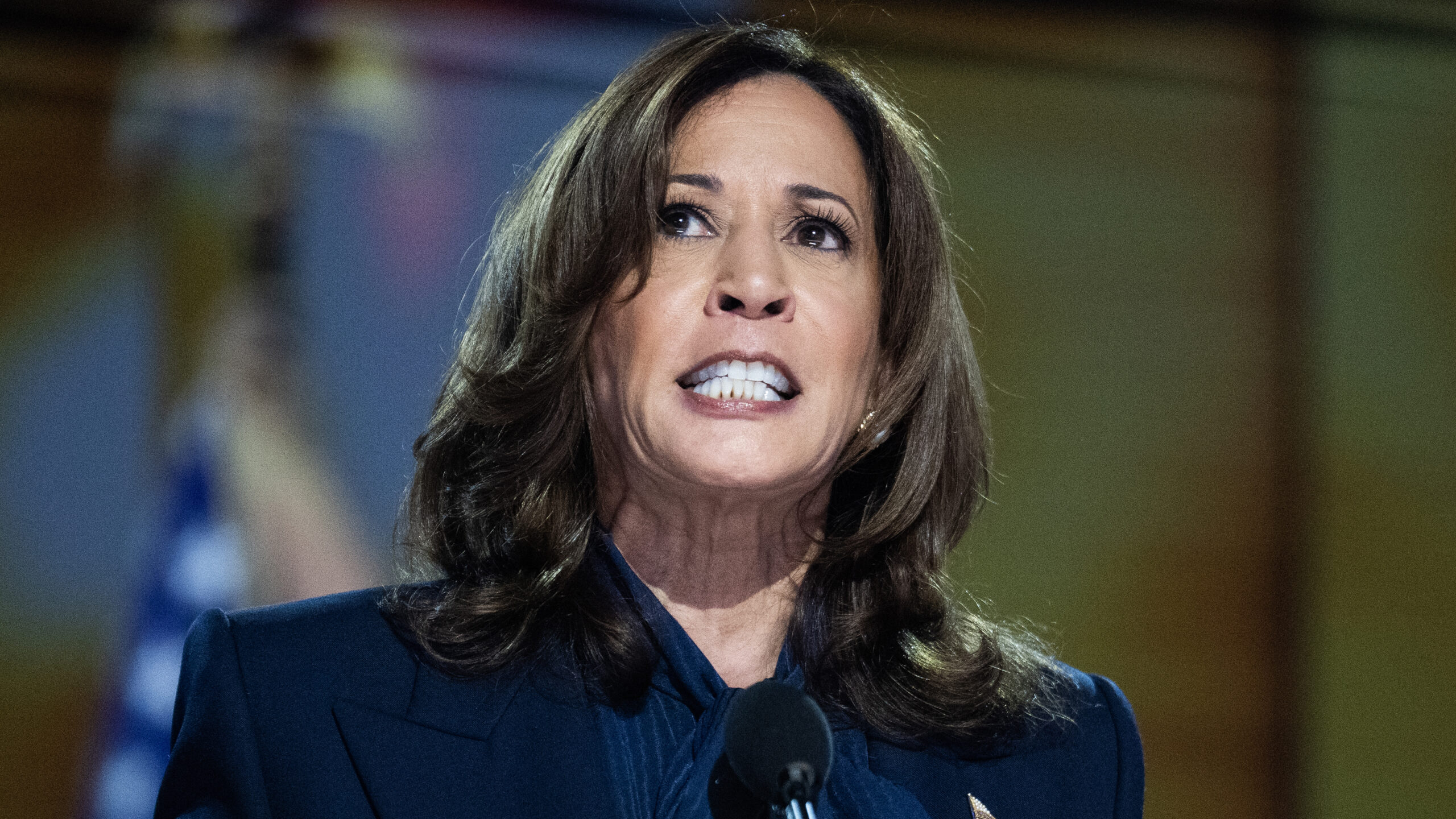
www.dailywire.com
Gold Star Families Blast Kamala Harris For ‘Heinous, Vile, Disgusting Post’ Attacking Trump
Gold Star families who lost their sons and daughters during the Biden-Harris administration’s disastrous withdrawal from Afghanistan in 2021 released a joint statement and individual statements over the weekend slamming Vice President Kamala Harris over a political attack that she made against former President Donald Trump that was filled with false statements.
Harris attacked Trump on Saturday for visiting Arlington National Cemetery to pay his respects to the 13 U.S. service members who died during the withdrawal, which was approved by Harris.
The families released a joint statement saying that they personally invited Trump to attend the event at ANC and that they were “appalled” by her attacks on social media, saying that she “disgracefully twisted this sacred moment into a political ploy.”
“Vice President Harris bears responsibility for the deaths of our sons and daughters,” they said. “Despite our multiple requests for a meeting to discuss the loss of our loved ones, Vice President Harris has repeatedly ignored us, showing a complete lack of empathy and accountability. This refusal to face the consequences of her administration’s decisions is a deep betrayal to us as Gold Star families.”
“President Trump, on the other hand, has been the only Commander-in-Chief to consistently recognize the heroism of our children,” they continued. “His attendance at Arlington was not for political gain but to stand with us, to grieve with us, and to honor the legacy of those who gave everything for this nation. His leadership during his time in office was strong, and we have no doubt that if he were still Commander-in-Chief, our children would be alive today.”
The families added that Harris has proven herself to be “unfit to serve” as president, saying she “lacks the judgment, compassion, and leadership required for the position.”
Trump then posted individual statements from the families in direct response to Harris’ post on Saturday where she claimed that Trump “disrespected sacred ground, all for the sake of a political stunt.”
She also repeated the false claim that Trump “called our fallen service members ‘suckers’ and ‘losers’ and disparaged Medal of Honor recipients.”
Nineteen officials, including 13 from Trump’s Paris trip, debunked the anonymous story that claimed Trump called soldiers “suckers” and “losers.”
Trump posted on his personal account and team account the following videos of Gold Star families responding directly to Harris’ post on X:
Steve Nikoui, Father of Lance Cpl. Kareem M. Nikoui, who said the following:
“Your administration killed my son deliberately in exchange for political theatrics so you could have a final day of the evacuation coincide with September 11th — ignoring the advice of your generals, the Doha agreement, and countless other veterans and members of Congress.”
“You were not at Dover for the dignified transfer. At no time have you reached out to me to offer your condolences, to offer thank you for Kareem’s sacrifice and service. Not once have you honored him by saying his name, so I said it for you.”
“You have disparaged all 13 who have lost their lives, as well as their families, exhibiting your lack of gratitude by your silence. I agree with you on one thing, that a person like you should never and will never stand behind the seal of presidency.”
“You are a DEI vice president and contrary to our kids, the worst that America has to offer.”
WATCH: Message to Kamala from Steve Nikoui, Gold Star Father of Lance Corporal Kareem M. Nikoui pic.twitter.com/Qm0M8VVMxG
— Team Trump (Text TRUMP to 88022) (@TeamTrump) August 31, 2024
Mark Schmitz, Gold Star Father of Lance Corporal Jared M. Schmitz, who said the following:
“Here we are on a beautiful holiday weekend day, I gotta stop what I’m doing, spending time with what’s left of my family, to address a heinous, vile, and disgusting post put out by Kamala Harris trying to incite those that don’t follow the truth.”
“Shows you how much you know about the 13 families. We invited him to be there. Groundwork was put into place by Congressman Issa’s office to make sure we followed protocol. Why did we want Trump there? It wasn’t to help his political campaign; we wanted a leader. That explains why you and Joe didn’t get a call.”
“Imagine for a second that your kid is killed and there’s a president of the United States willing to take you under his wing and listen to you. That’s what we found in President Trump. Certainly not you and certainly not Joe Biden.”
“You have 13 families who have been waiting over three years to so much as get a phone call, to so much as hear our kids’ names said aloud in the halls of Congress, at a State of the Union. Hell, anything.”
“The irony behind your post — that you give a rat’s ass about our military or our veterans, Jared’s brothers and sisters in arms, the rest of the 12, their brothers and sisters in arms — is an outright lie. We’re living proof of that.”
“You’re despicable, you have zero business running this country and I pray to God Americans wake the hell up and get your ass out of office. You have spit in our face for the last f**king time.”
WATCH: Message to Kamala from Mark Schmitz, Gold Star Father of Lance Corporal Jared M. Schmitz pic.twitter.com/EyKBNTmmP8
— Team Trump (Text TRUMP to 88022) (@TeamTrump) August 31, 2024
Jaclyn Schmitz, Gold Star Mother of Lance Corporal Jared Schmitz, who said the following:
“You have never walked a single day in our shoes, our kids were murdered because of your administration, and you are partly to blame for that as well.”
“What happened at Arlington was President Trump was invited by those families who have their soldiers buried at Arlington. They were invited there as a friend, as somebody who has taken the time, numerous times, on numerous occasions, to hear our stories, to speak our kids names, and to help us get some accountability from your administration, because in over three years, we have gotten nothing but more and more lies, just like your statement, more and more spins lies and coverups to make you and your administration look good.”
“But there is one thing that you said in your statement that was true. No one should be running for president if they cannot honor military members their families as well as veterans. So I guess that means that you should step down, Kamala.”
WATCH: Message to Kamala from Jaclyn Schmitz, Gold Star Mother of Lance Corporal Jared Schmitz pic.twitter.com/UvTI1s0Vza
— Team Trump (Text TRUMP to 88022) (@TeamTrump) August 31, 2024
Christy Shamblin, Gold Star Mother-In-Law of Sergeant Nicole Gee, who said the following:
“President Trump and his team were respectful. They listened to our stories and didn’t talk much at all. We welcomed them that day, and they were comfort to our family.”
“Vice President Harris, I ask you, why won’t you return a call and explain to us how you call my daughter in law’s death a success? Vice President Harris, why will you not express your condolences yourself? Why have we never heard from you? And finally, why would you take a day where we celebrated the death of our loved one and use it to disparage not only them but us?”
“President Trump has called. President Trump shows up. And President Trump takes the time to hear our loved ones stories. Why won’t you do the same?”
WATCH: Message to Kamala from Christy Shamblin, Gold Star Mother-In-Law of Sergeant Nicole Gee: pic.twitter.com/poRZ3Q2G3J
— Team Trump (Text TRUMP to 88022) (@TeamTrump) August 31, 2024
Herman Lopez, Gold Star Father of Corporal Hunter Lopez, who said the following:
“I’m not a person who usually takes the social media. But earlier today, your post regarding the incident at Arlington National Cemetery was brought to my attention. After reading it, it caused a reaction with me. You indicated in your post that you support the military and military families. I, for one, have not seen that support.”
“It’s been three years since my son was killed action and myself, my family and other girls, our families, have not seen any support from you or in your administration. You may make all promises about the economy or anything else you’d like to make promises about, but one thing that I ask of you, and the reason I’m making this message, is for you to stop making comments about your support for the military.”
“As a gold star father, I know that you have not supported us. I know that you’ve not supported other goals our families. Please stop making these types of comments, because that support has not been demonstrated. Your words are hollow and empty. My other request is that for the American public to know that these messages, these promises from Kamala Harris, especially in regard to supporting the military and our military families, are false and baseless. They have not been proven, and she has not earned our respect.”
WATCH: Message to Kamala from Herman Lopez, Gold Star Father of Corporal Hunter Lopez: pic.twitter.com/hq9GSor6QH
— Team Trump (Text TRUMP to 88022) (@TeamTrump) August 31, 2024
Jim McCollum, Gold Star Father of Lance Corporal Rylee McCollum, who said the following:
“Your recent remarks related to Trump’s visit to Arlington are filled with nothing but lies and deceit. How do you sleep at night knowing it was you, this administration, you and Biden, you being the last one in the room, are responsible for the death of our 13 kids?”
“You have failed for three years and eight months to acknowledge our kids, to acknowledge me. You don’t know me. You’ve never spoken to me. You’ve never reached out to me. You have failed in your duties as vice president.”
“You have been nothing but disrespectful to me and the families of the 13. Yet you’re claiming that you will always be respectful and show respect for our fallen, you’ve been absent for three years and eight months.”
“You’ve proven that you’re not capable to do the job that you have, let alone the job that you seek. You know nothing about honor, courage, commitment, respect that President Trump does. President Trump has been there for us. He’s been a rock for us. He showed compassion for us, and he showed he truly cares for the families that truly do know what the ultimate sacrifice really is. You have the day you deserve you.”
WATCH: Message to Kamala from Jim McCollum, Gold Star Father of Lance Corporal Rylee McCollum pic.twitter.com/UnOXrpmztu
— Team Trump (Text TRUMP to 88022) (@TeamTrump) August 31, 2024
Darin Hoover, Gold Star Father of Staff Sgt. Taylor Hoover, who said the following:
“Kamala, I want you to understand, and I know it will be difficult for you because you lack empathy and basic understanding, the events that happened on August 26, 2024 with President Trump at Arlington National Cemetery were solemn and in keeping with the reverence and respect that is given to all members of our military that are buried there, we invited President Trump.”
We are the ones that asked for the video and the pictures to be taken at the Tomb of the Unknown Soldier. … Again, we asked the Trump team to take the videos, take the pictures of our time there.”
“Let me be clear, there was no politics discussed, none whatsoever. There was also not an assault that we observed take place, or did we hear it. I don’t know where this is coming from, but it’s disgusting and gross.”
“President Trump has been there for us from the very beginning when our son and the other 12 of his brothers and sisters in arms were murdered due to your negligence and uncaring attitude towards our military. Don’t forget, Kamala, you were the last one in the room. You and Joe Biden made the final decision on how to pull out of Afghanistan. You created the chaos and mayhem for the military to accomplish their goals.”
“Kamala, we have been treated with the utmost respect, compassion and understanding by President Trump, something you and Joe Biden have refused to do since August 26 2021.”
“Where were you and Joe Biden on August 26 2024? Nowhere near Arlington Cemetery. You couldn’t be bothered to be with us or even say our kids names, just as you had done for the last three years, neither one of you have called to speak with us or share in our grief. I wonder, Kamala, do you sleep at night securely in your bed, or do you have nightmares of our kids? Because it was your incompetence and negligence that got our kids murdered.”
“It is you who sends out messages on social media that are outright lies. It is you that has disrespected our families. It is you who knows nothing about service and sacrifice. It is you that has divided this country, and it is you who is unfit to be the commander in chief. These are the only memories we get to make with our son, and it is you who is playing politics and trying to detract from our memories made that day. You should be ashamed and embarrassed at your lack of empathy and decency as a human being.”
“You are only in this for the power and prestige, you don’t care for our military or the citizens of this country. You should hang your head in shame at your actions or lack thereof. You need to move aside, get out of the way and stop hindering the progress, growth and independence of this great nation.”
WATCH: Message to Kamala from Darin Hoover, Gold Star Father of Staff Sgt. Taylor Hoover pic.twitter.com/kaGJHdbpi7
— Team Trump (Text TRUMP to 88022) (@TeamTrump) August 31, 2024
Coral Doolittle, Gold Star Mother of Corporal Humberto A. Sanchez, who said the following (revised for clarity):
“I really feel like when President Trump went and paid tribute and pay his respects and arguing things for our kids, it was not just the ones there in there, it was for all of our kids, and it was an invitation that the families actually extended to him and it’s not the first time that he actually like met with us and shared time with our families.”
“After three years until now, Kamala Harris and President Biden didn’t even say their 13 names. They called the withdrawal in Afghanistan a success, and for us it was just sadness and disgrace. They are the persons responsible for murdering our kids, and until this day, they did not give us meetings. They did not accept to meet with us and give us an explanation of what happened, being him, the commander in chief. He definitely left our kids behind and just to fill the agenda of his prior commitments.”
WATCH: Message to Kamala from Coral Doolittle, Gold Star Mother of Corporal Humberto A. Sanchez pic.twitter.com/3QAiGmYXbs
— Team Trump (Text TRUMP to 88022) (@TeamTrump) August 31, 2024
During his visit to ANC, the former president was joined by his photographer and videographer when an unnamed cemetery worker reportedly tried to “physically block” Trump’s team from accompanying him and stop them from filming and photographing in Section 60. The worker was reportedly brushed aside so Trump’s team could stay with him.
Trump spokesperson Steven Cheung said that the cemetery worker was “clearly suffering from a mental health episode.”
Trump campaign co-manager Chris LaCivita, who was awarded a Purple Heart for injuries he sustained while serving in the U.S. Marine Corps during the Gulf War in 1991, said that the cemetery worker was “a disgrace and does not deserve to represent the hallowed grounds of Arlington National Cemetery.”
The altercation was reported to the police, but the cemetery worker did not press charges.
Cheung posted a statement that Trump’s team received from ANC about media guidance and rules surrounding the event, saying that Trump was allowed to have his media team with him.
“Only former President Trump may have an official photographer and/or videographer outside of the main media pool,” the statement said. “If any of the other attendees DVs would like to bring media, they must arrive at 7:00 a.m. and be incorporated into the press pool. We recommend against bringing additional media due to limited space available in the press pool.”
Furthermore, President Joe Biden, while serving as vice president in the Obama administration, had his media team with him while visiting ANC’s Section 60 in 2010. Biden subsequently used the footage in an advertisement for his 2020 presidential campaign.
May 25, 2020: Biden campaign ad includes photo of @JoeBiden standing over a tombstone at Arlington National Cemetery, Section 60, on May 31, 2010. https://t.co/q18uyNycId pic.twitter.com/6Y1IvLVSG2
— Jeryl Bier (@JerylBier) August 29, 2024
Biden did not attend the ceremony of the 13 American soldiers who were killed during his withdrawal — a withdrawal that Vice President Kamala Harris signed off on — and instead opted to go on vacation in Delaware.
Harris also did not attend the ceremony.














